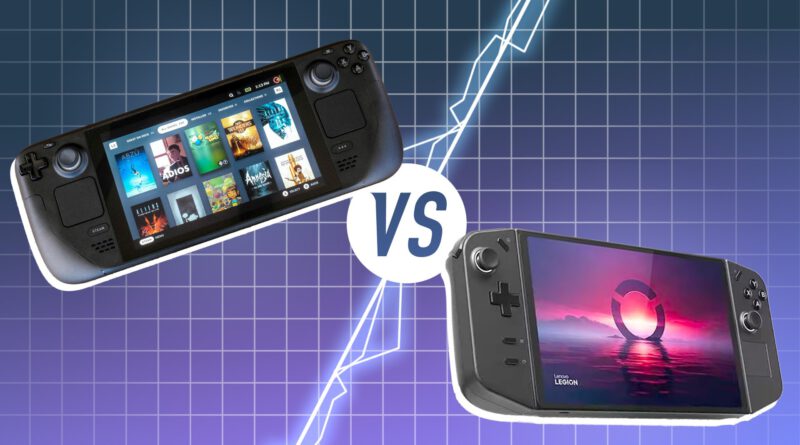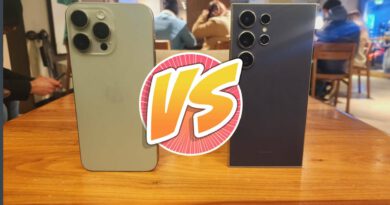Steam Deck vs. Lenovo Legion Go: I tested both, but which is better?
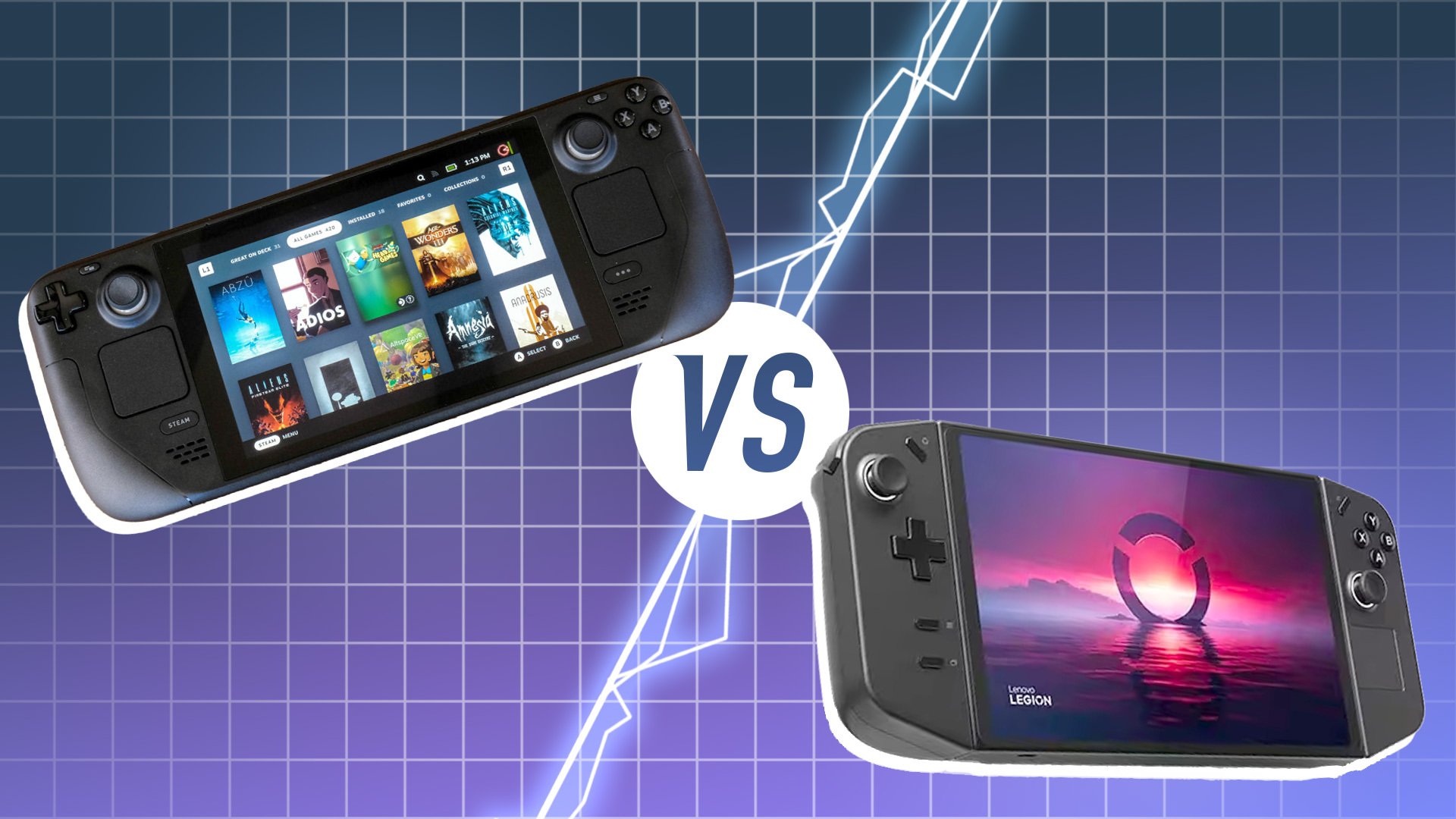
The Steam Deck and Lenovo Legion Go are two powerful handheld gaming PCs, but the question is, which one should you choose?
These two portable powerhouses represent some of the best handheld gaming money can buy, but there’s simply no reason to get both.
So, with that in mind, which one is best for you? That depends on what you want. Do you desire raw power, or are you willing to sacrifice specs for portability? Do you need the versatility of Windows, or are you good with just the games in your Steam library? These are important questions to answer, so without beating around the bush, let’s start answering them.
Steam Deck vs. Lenovo Legion Go: Price
Obviously, the number one decision to factor into any purchase is how much the product will cost you.
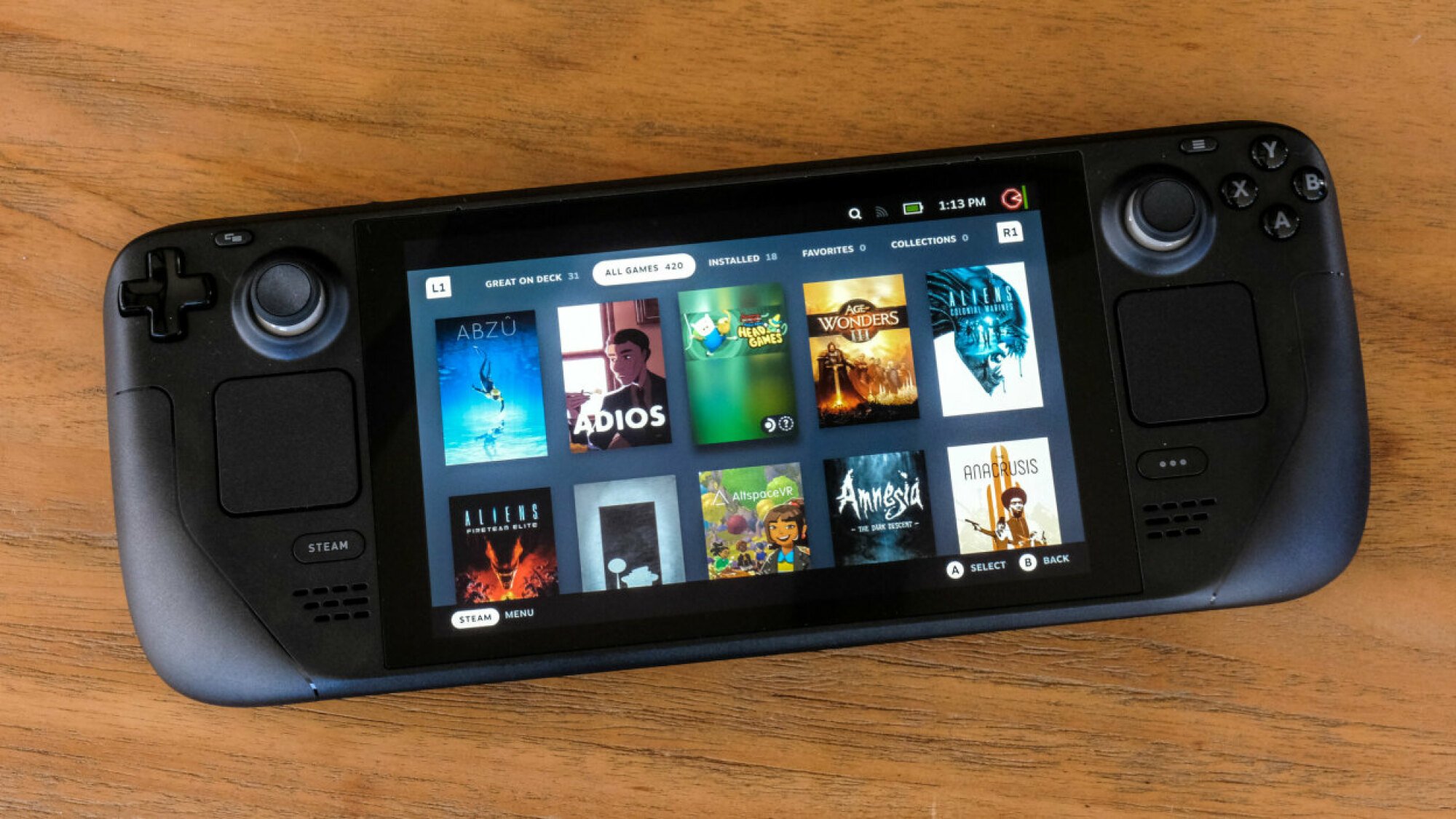
When it comes to price, there’s a very clear winner between the Steam Deck and Legion Go. Valve’s device has a much lower starting price and even the most high-end OLED model costs less than the base Legion Go.
Steam Deck has the following configurations available:
-
256GB – $ 399
-
512GB (OLED) – $ 549
-
1TB (OLED) – $ 649.00
On the other hand, you can cop the Lenovo Legion Go in the following variants:
-
512GB – $ 699
-
1TB SSD – $ 749.99
Winner: Steam Deck
Steam Deck vs. Lenovo Legion Go: Display
Any portable gaming machine needs a great display. That’s just a given. The good news is that neither of these machines offer anything close to a bad one; that said, Lenovo’s device is far superior in this regard.

To be more specific, here’s how the display specs shake out between Steam Deck and Lenovo Legion Go:
-
Steam Deck: 7-inch screen with 1200 x 800 resolution and 60Hz refresh rate
-
Lenovo Legion Go: 8.8-inch display with 2560 x 1600 resolution and 144Hz refresh rate
Lenovo’s machine has a display that’s bigger, sharper, and smoother in every regard that matters. There is a tiny caveat here, which is that Valve just released a new OLED Steam Deck model that has an upgraded 7.4-inch OLED display with the same resolution and a souped up 90Hz refresh rate. However, even with those enhancements, Lenovo Legion Go is still a clear winner in this regard.
Winner: Lenovo Legion Go
Steam Deck vs. Lenovo Legion Go: Design
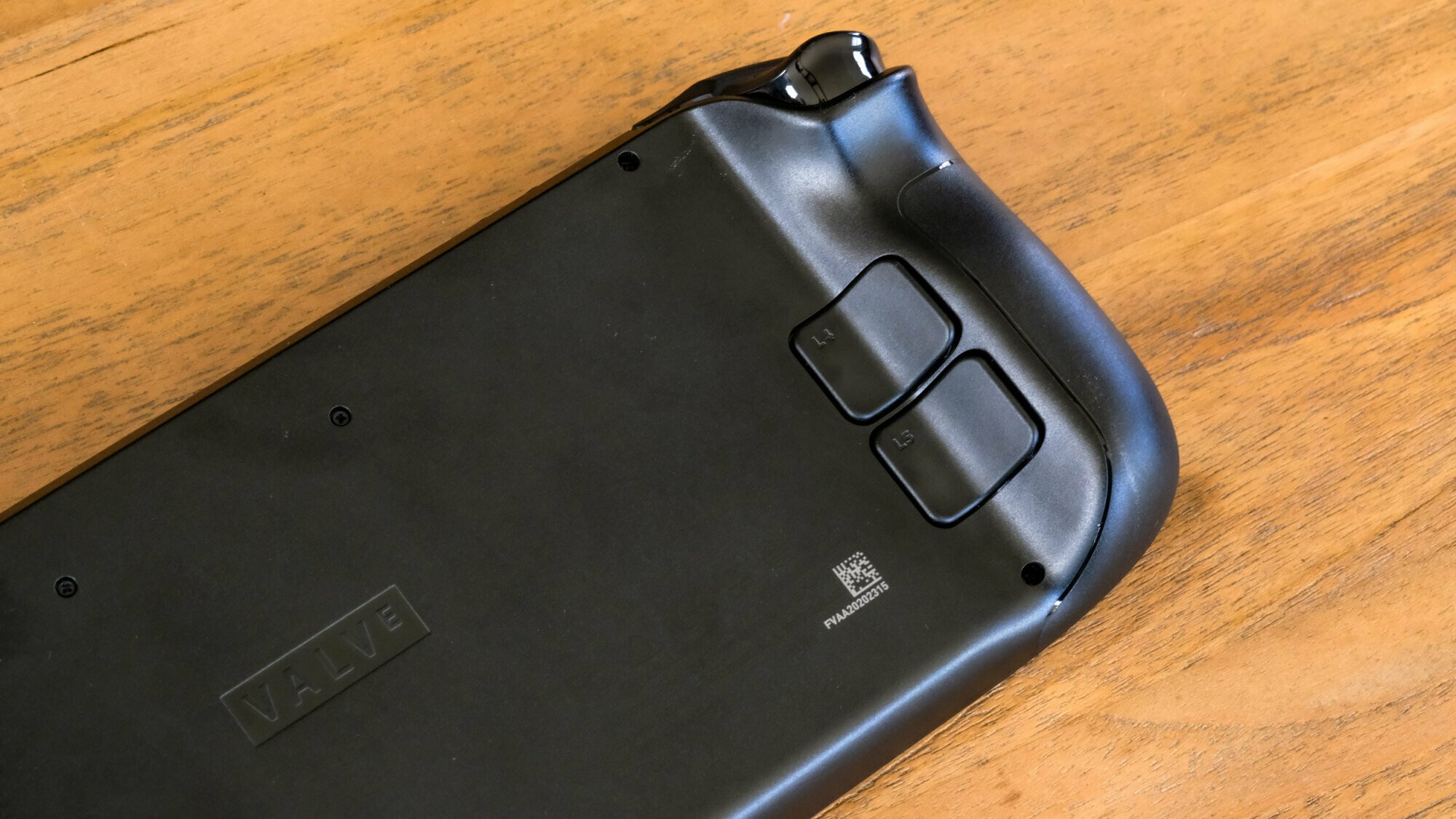
When it comes to their physical designs, both of these devices are fairly similar in that they each look like a juiced up Nintendo Switch, with a big display in the middle sandwiched between control mechanisms. Both machines have standard controller configurations with two analog sticks, a D-pad, four face buttons, four shoulder buttons, and some back buttons for additional inputs if you need them.
I should note that the Steam Deck has two mouse-like trackpads, one on each side of the device, while the Legion Go only has one. One area where Legion Go outshines Steam Deck in this regard is in its detachable Switch-like controllers; the Steam Deck is all one contiguous unit that can’t be detached in any way.
However, Valve’s portable PC ultimately wins this category because of its substantially lower weight when held in your hands:
-
Steam Deck: 1.47 pounds
-
Lenovo Legion Go: 1.88 pounds
Steam Deck vs. Lenovo Legion Go: Performance (based on our testing)

Good news: Both of these devices are way more powerful than the Nintendo Switch! That’s a major test and both of them pass with flying colors.
However, there’s more nuance to this. Lenovo Legion Go contains an AMD Ryzen Z1 Extreme processor (the same as the high-end competitor ASUS ROG Ally), which is known to be more powerful than the Steam Deck’s custom “Aerith” processor. Don’t get it twisted, though. Both of these machines are plenty powerful and can run pretty much anything but the most cutting-edge recent AAA titles with ease.
But when it comes to said AAA titles, Lenovo’s device is a clear winner.
Cyberpunk 2077 fps average for Steam Deck: 30 frames per second
Cyberpunk 2077 fps average for Lenovo Legion: 40 frames per second
Cyberpunk 2077 has a special “Steam Deck” graphics configuration, and with that enabled, the Legion Go can run the famously demanding RPG at a fairly consistent 40 frames per second. The Steam Deck, meanwhile, is closer to 30 frames per with the same settings enabled. That’s a reasonably substantial difference, enough of one to give this category to Lenovo.
Here’s a more by-the-numbers look at what lies inside of these two PCs:
-
Steam Deck: AMD APU Zen 2 4c chip, up to 16GB RAM and 1TB storage
-
Lenovo Legion Go: AMD Ryzen Z1 Extreme, up to 16GB RAM and 1TB storage
Winner: Lenovo Legion Go
Steam Deck vs. Lenovo Legion Go: Operating system
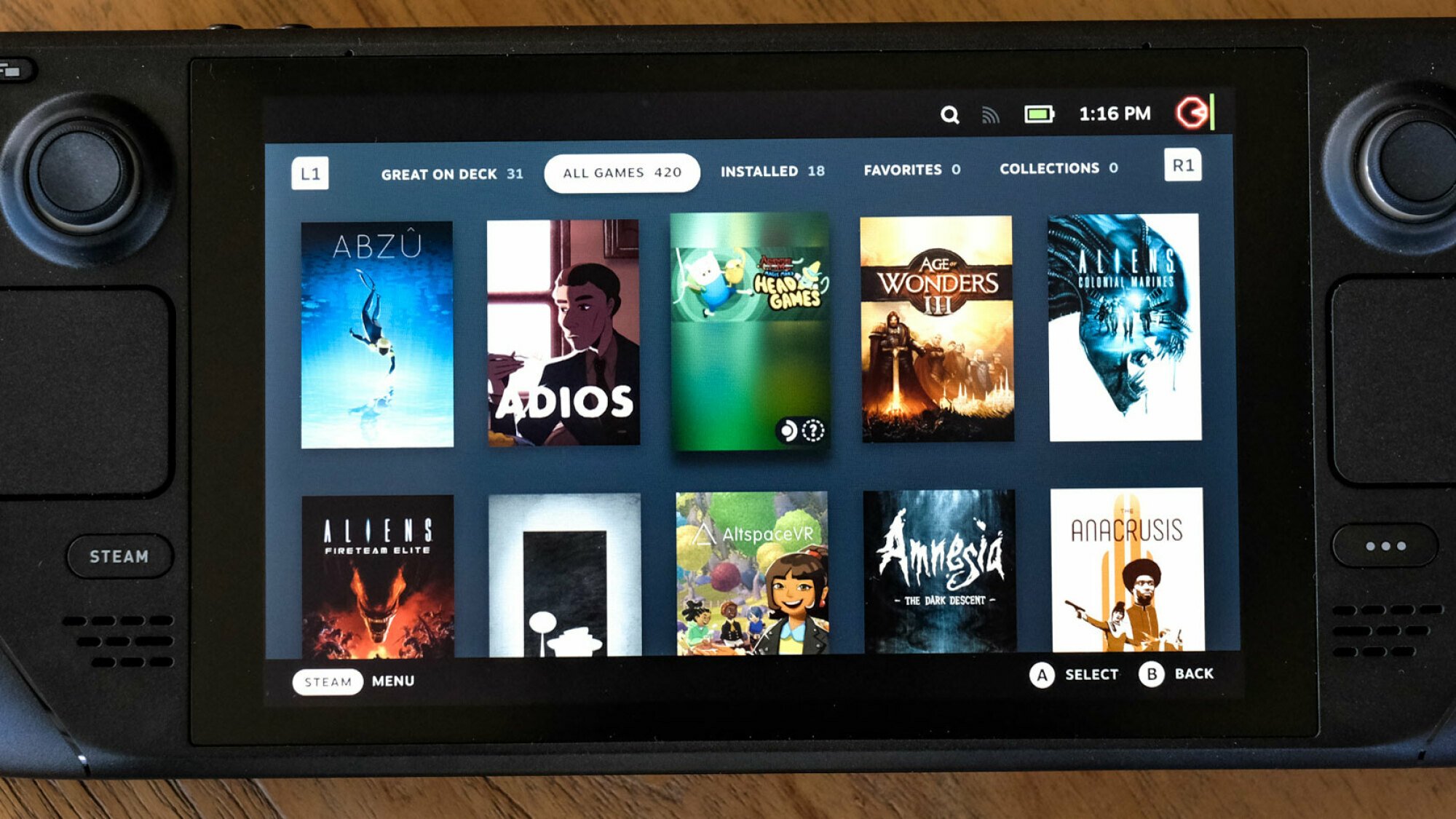
Where things really get juicy is in the realm of operating systems. Steam Deck runs on a custom version of Linux called SteamOS. Naturally, it plays really nicely with the Steam storefront, library, and social features. If you’ve been PC gaming for many years and have a robust Steam library, the Steam Deck will grant you instant access to all of that in an attractive, easy-to-navigate UI.
But if you want to use Xbox Game Pass or the Epic Games Store, things get more complicated. You can just install Windows on Steam Deck, but that requires some know-how and effort. This is where Legion Go takes a commanding lead in our competition, as it just comes with a clean Windows 11 install out of the box. Anything you can do on a Windows PC, you can do on a Legion Go. It all works the same.
Now, philosophically, I respect both approaches. I personally like how the Steam Deck feels more like a gaming console and less like a PC. There’s less clutter and hassle. But objectively speaking, Lenovo gives users more options with less effort.
Steam Deck vs. Lenovo Legion Go: Battery life
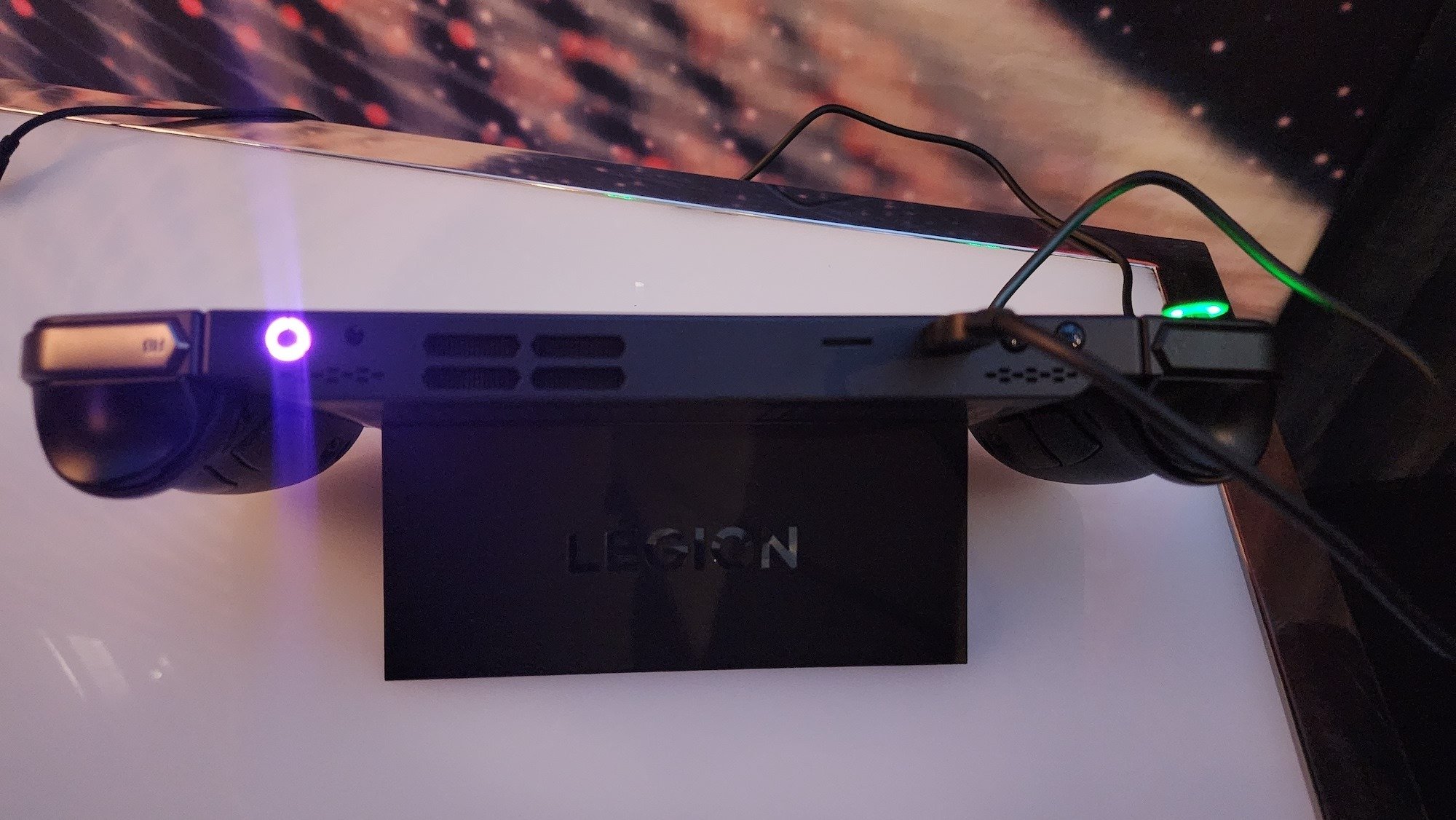
As far as battery life is concerned, Legion Go has a more impressive-looking 49.2Whr battery compared to the Steam Deck’s 40Whr battery. In more practical terms, though, both devices are only going to offer somewhere between two and four hours of life on a full charge, depending on which games you play on them.
Legion Go can stretch its battery out a bit further than Steam Deck, but not so much that you should base your purchasing decision entirely on that.
Winner: Legion Go
Final thoughts
The Legion Go has a bigger and better display, more impressive internal specs, detachable controllers, and requires much less effort to play games from a variety of online storefronts. Steam Deck is a fantastic device, no doubt, but Legion Go is better in all the ways that matter if you’re really serious about PC gaming.
Winner: Legion Go
